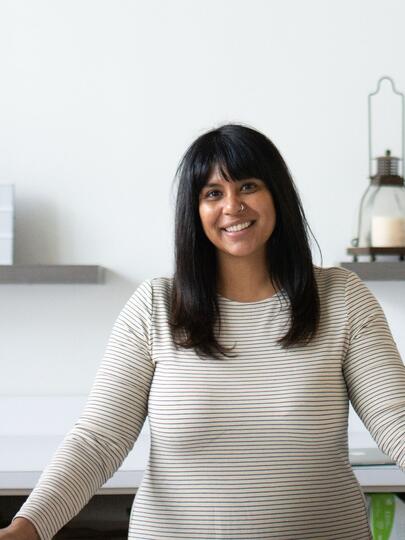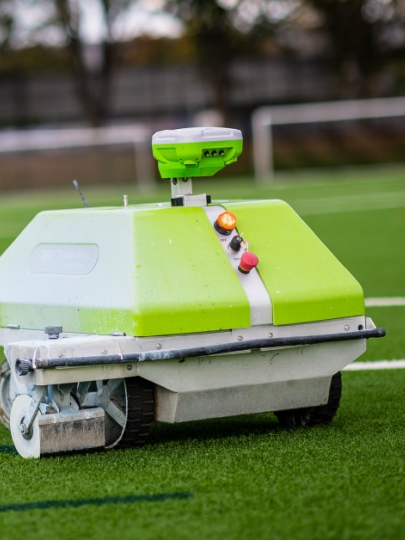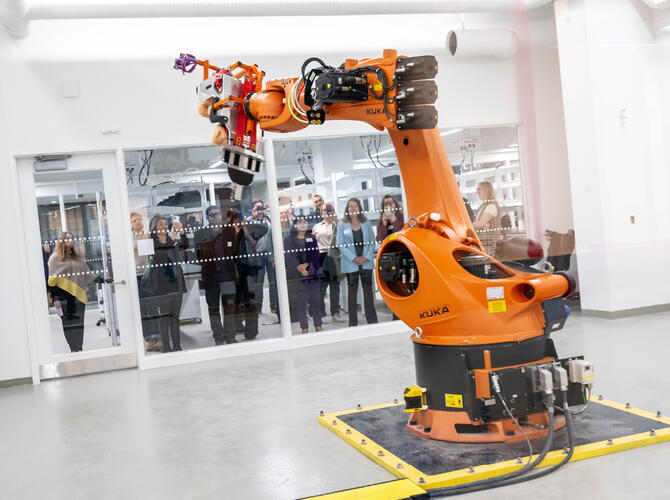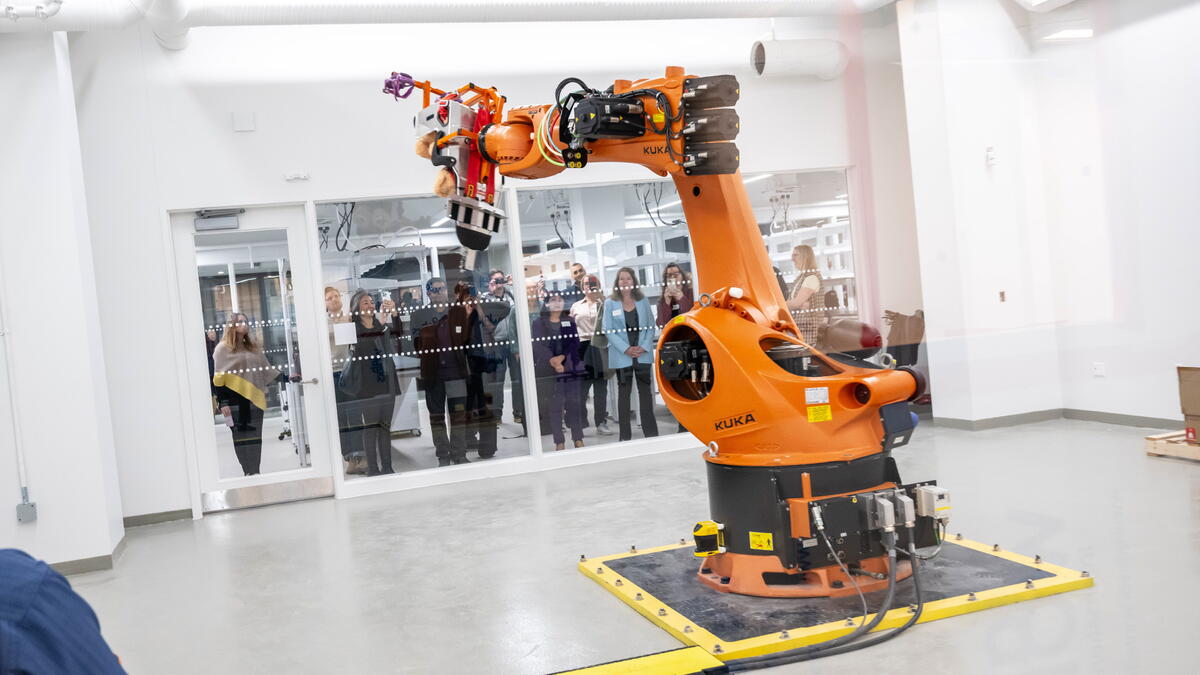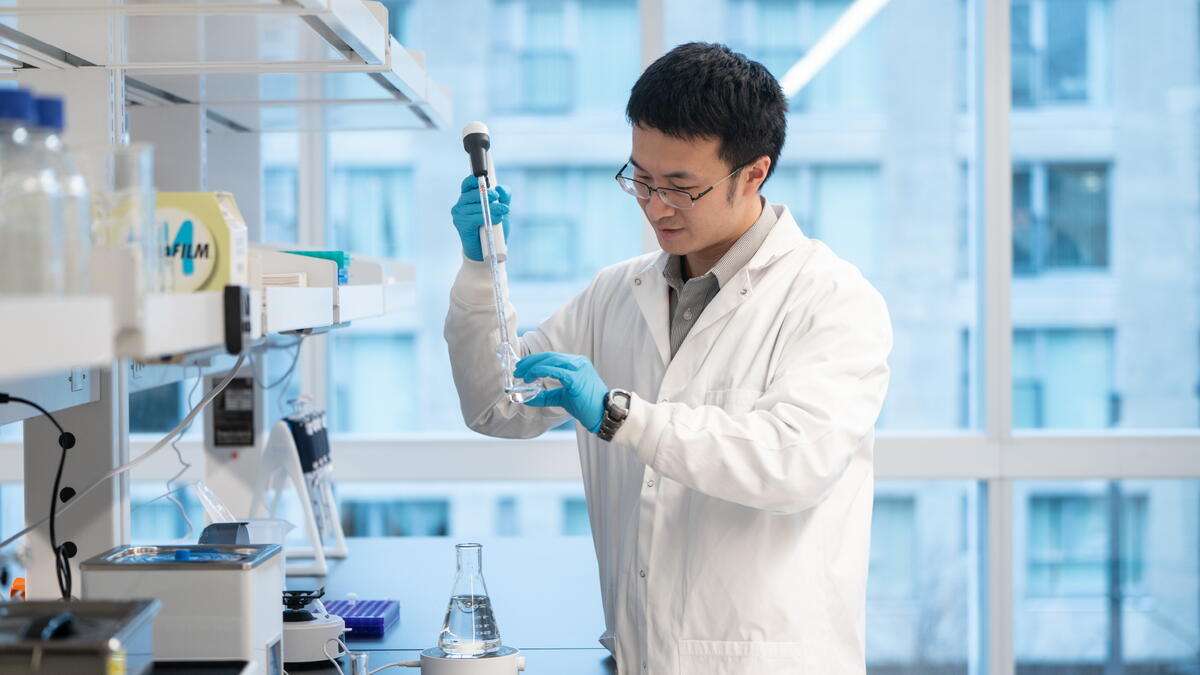President’s Highlights
From stem cells to robots
A look inside the Gordon B. Shrum Building – the new home of UBC’s School of Biomedical Engineering.
The best part of any president’s job is to see up close the research, teaching, learning, and innovation that define great universities like UBC.
A perfect example was the official opening of the Gordon B. Shrum Building, the new home of UBC’s School of Biomedical Engineering, on April 7. That morning, about 150 guests gathered – researchers, alumni, donors, and leaders from the biotech and medical technology sectors – united by a shared commitment to advancing life sciences and health innovation in British Columbia.
The unveiling of the building’s official name and plaque was a proud moment, but the real highlights came during the tour that followed. To walk through this state-of-the-art facility and witness, firsthand, the exceptional work of our researchers and students was both inspiring and humbling.
In Dr. Nika Shakiba’s lab, we learned about her team’s work to understand how stem cells make decisions about their own fate – a fundamental question with major implications for medicine. The lab is developing tools that can both model and guide these decisions, with the goal of engineering cells that can be used to treat disease. For example, one area of focus involves coaxing stem cells to reliably become beta cells – a type of cell in the pancreas responsible for producing insulin. This work could one day lead to new therapies for patients with diabetes and even make personalized cell therapies more accessible and effective.
In Dr. Peter Zandstra’s lab, I was reminded of the school’s founding vision of bringing together engineering, biology, and medicine in the service of addressing complex health challenges. He spoke about how the new facility enables researchers, students, and industry partners to collaborate more effectively than ever before – pushing boundaries, accelerating discoveries, and creating transformative health technologies that can move from the lab to real-world application with greater speed and impact.
Dr. Zandstra came to UBC in 2017 as the founding director of the School of Biomedical Engineering (SBME) and was involved from the very beginning in helping bring the new facility to fruition. You can imagine his pride on that day! He showed us the striking four-storey mural in the middle of the building – a full-circle moment when he told us about how his former student, Dr. Jen Ma, is the artist who created the piece. Ma completed her PhD in stem cell bioengineering under Dr. Zandstra’s supervision. Her artwork and its sweeping forms represent SBME’s technology and engineering approaches that seamlessly integrate with the human body at multiple scales.
Here is another full-circle moment: Several members of the Patkau Architects project team who designed the building are UBC alumni from UBC’s Master of Architecture degree program. What an incredible moment to see our own grads bring their talents back to their alma mater to create this beautiful space.
We also visited Dr. Peter Cripton’s lab, where members of his research team, Loay Al-Salehi and Jeff Nickel, demonstrated a giant orange robotic arm that is so large it occupies an entire room in one of the basement labs. With a giant teddy bear strapped into a seat on the robot like a crash test dummy, they ran a realistic simulation of a vehicle rollover crash. It was both funny and a little scary. There were no volunteers to sit in that seat! While the team’s work might look playful, its purpose is vital: to understand the mechanics of injury in high-impact events like car crashes and to develop better technologies to prevent serious injury and harm.
Every corner of the Gordon B. Shrum Building was built to foster creativity and innovation. The five-storey, 158,000-square-foot facility seamlessly integrates cutting-edge technology with collaborative spaces. It’s not just an architectural achievement; the space itself is a living laboratory for research discovery and collaboration.
This incredible facility, the first of its kind in Canada, was made possible by the vision and generosity of our donors who gave more than $30 million in philanthropic contributions – including from the Gordon B. Shrum Charitable Fund, the Conconi Family Foundation, United Therapeutics Corporation, Dr. Jim McEwen, and Paul and Nicole Geyer. The Government of British Columbia also contributed a remarkable $25 million investment that will pay off for all British Columbians.
After the event, I hopped in a cab and made my way to the airport – en route to a Universities Canada meeting in Halifax. I carried with me a renewed sense of energy as I headed into another full week of meetings. But that’s the rhythm of this role, and it’s the moments I get to spend seeing innovation in action that make it so meaningful.
The Gordon B. Shrum Building marks a bold new chapter for UBC’s School of Biomedical Engineering. But what excites me most isn’t just the building – it’s the sense that its best stories haven’t even been written yet.
I can’t wait to see what the next page holds.














